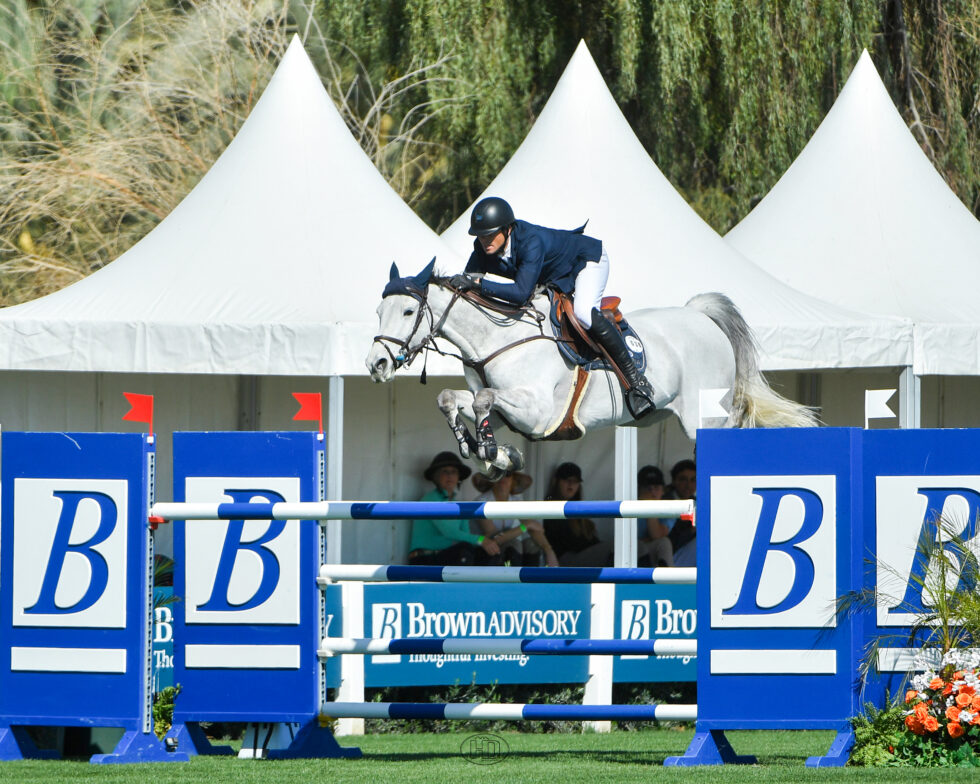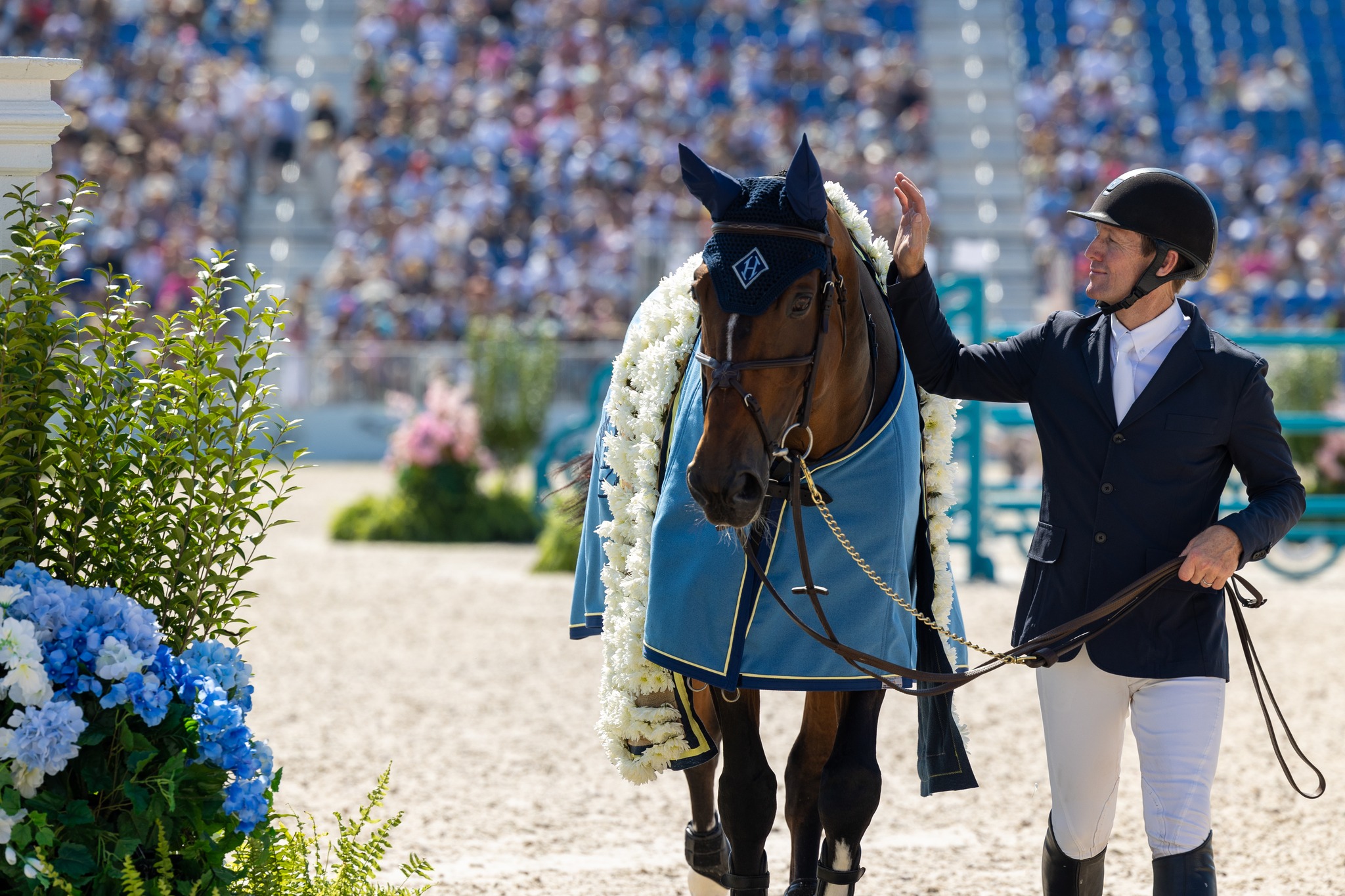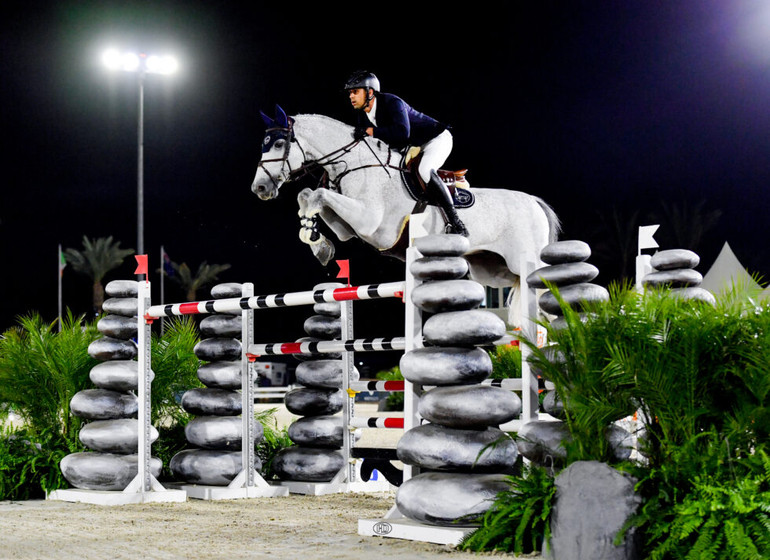Gregory Wathelet (BEL) has a winning edge no matter the mount, but his homebred mare Argentina De La Marchette worked even more into his favor Friday morning to win the $77,300 Brown Advisory CSI4* 1.50m Speed during Desert Circuit IX.
“I knew the class today would be quite fast,” Wathelet said. “It was a nice course; it was good for a speed class. I know she’s fast. She’s done good things here. I gave her some quiet weeks because if I try to rush all the time she gets a bit hot. I knew this was a class that was a good fit for her today with good prize money. The plan was to put her in this class and it worked well.”
Coming in the first half of the starting order of 30 entries, Wathelet blazed the 11-year-old SCSL mare (Acajou De La Marchette x Del Piero PB) around Peter Grant’s (CAN) track in 68.74 seconds, leaving very little wiggle room and pushing Katie Laurie (AUS) and Django II into second place with their time of 71.18 seconds. Laurie ultimately finished second, while Eliza Broz took third with Kardenta Van’t Meerhof in 76.11 seconds.
“My plan was to go for it,” Wathelet said of his round. “There were a few fast ones coming behind me. I had my own plan and she was jumping fantastic. She was really fighting. I picked up a good speed and I kept it until the end.”
On the tail end of a highly successful circuit, Wathelet is reflecting on his choice to bring the four horses he did, feeling a sense of accomplishment and progress with each one of them.
“You always come with a good plan and hope, but it’s always normally the other way,” he reflected. “It’s usually bumpy. I took the right horses here. They’re good horses, horses that were performing a lot in Europe. They’re in good form, and my horses have proved to be quite competitive. Everything has gone right but that is the sport; next year it might be different but we have to take it day by day.”
Argentina De La Marchette is unique to Wathelet as she is a homebred, bred by his father, Hubert, and has been in the family ever since. Gregory himself has ventured into breeding on his own farm back home, realizing the passion behind producing horses from the very start.
At the beginning I was not as interested. It’s a long process and expensive. I also had no time.. I started about seven years ago when I got my own farm. I have stallions, mares, and the place [to raise them]. I wanted to try at least. [Argentina] is different because my dad bred her before I got started myself. It’s more his mare.
“It’s a long process, an expensive process, you [often] get disappointed, but that’s also why we do the sport, because it’s the same thing,” he said of what he’s learned as he has gotten more involved with breeding. “There are many good times and then small things that [remind] you teh [reason] of why you have done that, like when you win a big grand prix or win at Aachen. Then you know why you had to fight [for so long].”
The difference, according to Wathelet, with breeding your own horses as a top professional is you’re playing the long game.
“It’s different when you buy a horse and you can sell it or use it straight away,” Wathelet continued. “What we do today, [we see the result] maybe eight years or 10 years later. When you have some when you’ve ridden the mother and father it’s a bit more special. We have some coming 2 to 3 years old that are really nice ones.”
Show jumping resumes Saturday with the final $50,000 National Grand Prix, sponsored by Kubota, the awarding of the $100,000 National Grand Prix Rider Bonus, and the $38,700 Pomponio Ranch CSI4* 1.45m Classic.



